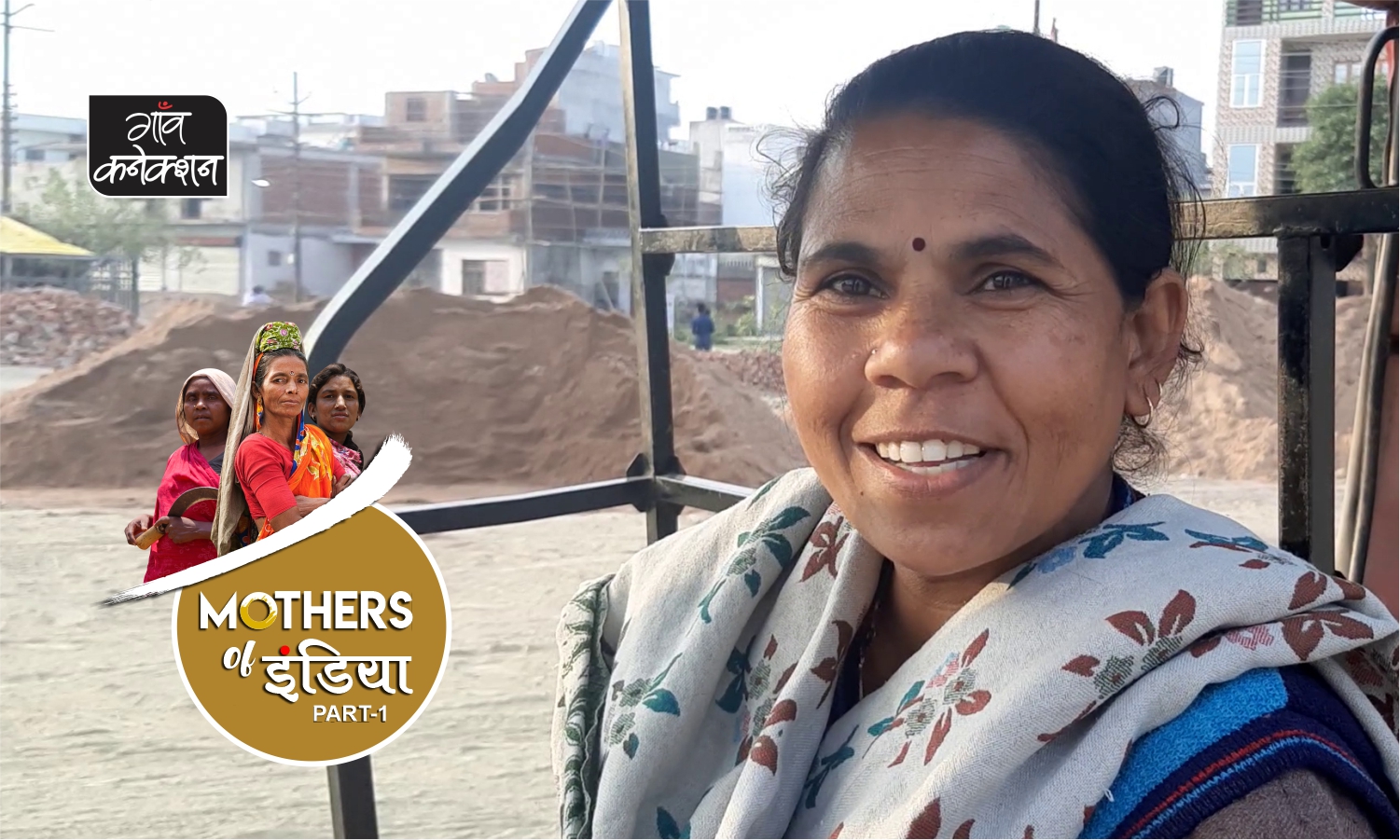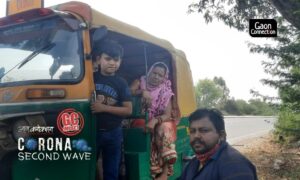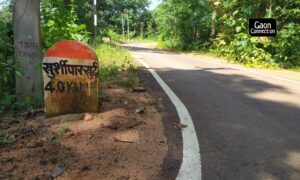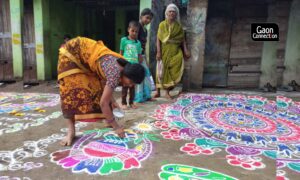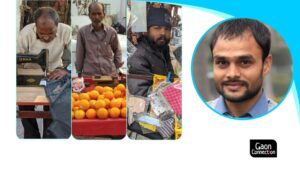Lucknow
What all do the mothers do to raise their children? Gaon Connection is running a special series – Mothers of India. We met some of the mothers who have taken to newer ways to work by moving beyond domesticity. Meet e-rickshaw driver Pushpa Nishad.
When Pushpa Nishad takes to the road, by-walkers pass comments like “Doing great work!” … “Oh wow! amazing skills!” … “You drive pretty well!” … “Look over! A female driver!” … “What an amazing driver!” … “What’s your name?” … Pushpa Nishad, 37, has become habitual of listening to exhortations from her passengers and people walking on the road every day. Pushpa is one of the seven women from Uttar Pradesh who have a license for driving an e-rickshaw.
From the narrow streets of the city to the big intersections, when her battery-powered e-rickshaw zooms past, it holds people’s attention for a while.
“Charbagh! Charbagh! Hazratganj! Hazratganj!”
Pushpa’s story is an inspiration for millions of women in the country. The story is also special because she resolved to work outside the conventional mode of livelihood and break the patriarchal mindset for the sake of her family.
“Earlier I was identified as someone’s daughter, sister, wife and mother, but now I have my own identity that is derived from my work. I don’t know a greater source of delight for a woman,” said Pushpa, switching off her e-rickshaw and added: “When I held these keys for the first time, my hands were trembling, but now I can even drive a car. This e-rickshaw is my own, so it is more profitable to operate it.”
The Transport Department of Lucknow did not have any data on the exact number of women commercial drivers in Uttar Pradesh. According to the Delhi Transport Department’s 2018 data, there is one licensed woman driver per 75 men in Delhi.
But the journey to become a successful driver was not so easy for Pushpa. Sitting on a park bench at about seven in the evening, Pushpa shared the ups and downs of her life. Even today, she cried for a long time remembering her troubled past.
“Once I had gone to the banks of the river and tried committing suicide, but then I thought of my innocent children and returned quietly from there. It was becoming difficult to look after my children by working as domestic help. The husband used to drink alcohol every day, swear at and beat me which was too much to bear,” said Pushpa. Her tears continued unabated when she added: “I bore it all in silence for 13-14 years of marriage. I had always hoped for him to improve, but it did not happen. One day, my drunken husband dragged me to the road and beat me senselessly. When this failed to satisfy him, he forced a rod in my private parts.”
Pushpa was completely shattered by the incident. She had to undergo treatment for months. The incident happened in 2013 when Pushpa decided to stay apart from her husband forever. Her husband had locked her up in a house for two to three days. When it was reported to the ‘Humsafar’ institution working in Lucknow, it totally supported Pushpa to recover from the shock. With the help of this institution, Pushpa took the training of e-rickshaw driver in the year 2016 and has been running e-rickshaw from 2017.
Describing the first day at work, Pushpa said: “On the first day, when I drove my e-rickshaw, I could not simply call out to the passengers. Everyone was watching me with curiosity. I gathered all my courage to call out to the passengers in a slow voice. That entire day I earned only Rs 60.”
It took a couple of months for Pushpa to overcome her hesitation. The Humsafar institution had trained six other female drivers besides Pushpa. This was the first batch of women’s e-rickshaws drivers of Lucknow in Uttar Pradesh. At that time, erstwhile Chief Minister Akhilesh Yadav had given them one e-rickshaw each by looking at their skills. These e-rickshaws have made them economically independent and provided them with their own identity.
“Now many people know me by name. The passengers look at me with respect. I have come to be identified with my work. I have never regretted being a single mother for the last six years,” said Pushpa confidently holding the handle of her e-rickshaw. “Today, I am competent enough to raise my three children.”
Even though these words of Pushpa may sound ordinary to the reader, their meaning is very special and unique.
Pushpa’s world revolves around her three children. Pushpa, born in a poor family on Gokhale Marg in Lucknow, has seen several ups and downs in life.
Pushpa had been trained by an NGO in Lucknow, ‘Humsafar’, to be an e-rickshaw driver. The institution is engaged with the struggling women for the past 16 years. The project coordinator of the organization, Mamta Singh, told Gaon Connection: “We try to connect struggling women with such means of livelihood that also shatter patriarchal stereotypes. So far 100 women have been trained as drivers, but only 15 female drivers are plying permanently on the road.”
According to official statistics, vehicles are registered under only 11% women in Delhi. These figures are enough to tell that the number of women driving on the road is still much lower than that of men.
By running the e-rickshaw, Pushpa earns Rs 12,000 to Rs 15,000 in a month. She has two sons and a daughter who are studying. Until 2006, Pushpa who had studied till class five, had lived in a hut along the river and worked as a domestic help to provide for her children. Seeing her difficult situation, certain institution had allotted her a house at Telibagh under Vrindavan scheme. She now lives there with her children.
“I have trained many women. Some have even started running rickshaws on the road,” Pushpa informed.
“I would like to marry my daughter as per her wish so that she doesn’t face the difficulties that I had endured,” said Pushpa. “I take all the decisions of my house today. I have the right to decide and spend the money that I have earned. I live separated from my husband. People may talk a lot but it doesn’t bother me.”
This is part one of the series, Mothers of India
Read part two of the series here
Read part three of the series here

